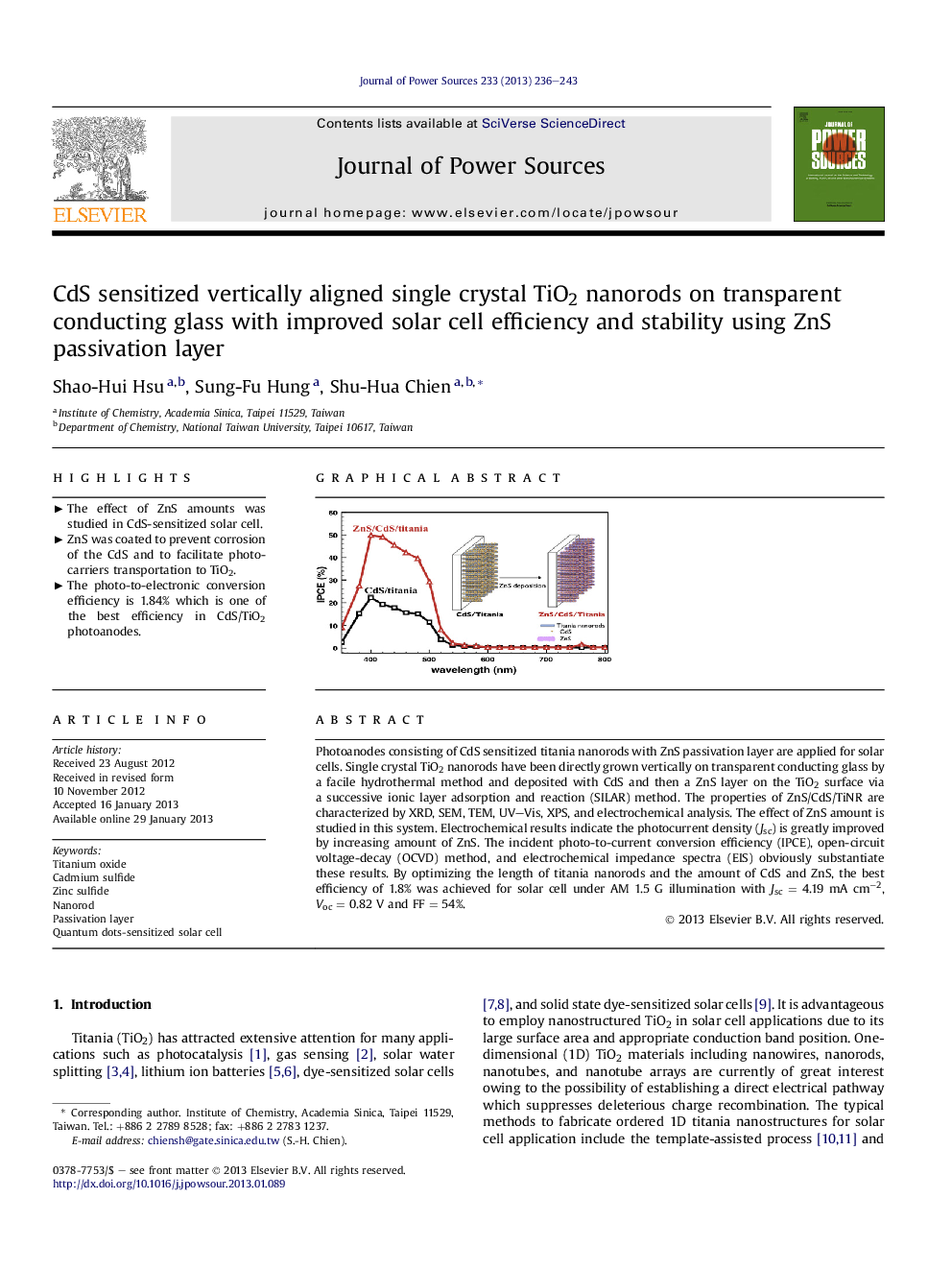| Article ID | Journal | Published Year | Pages | File Type |
|---|---|---|---|---|
| 1293003 | Journal of Power Sources | 2013 | 8 Pages |
Photoanodes consisting of CdS sensitized titania nanorods with ZnS passivation layer are applied for solar cells. Single crystal TiO2 nanorods have been directly grown vertically on transparent conducting glass by a facile hydrothermal method and deposited with CdS and then a ZnS layer on the TiO2 surface via a successive ionic layer adsorption and reaction (SILAR) method. The properties of ZnS/CdS/TiNR are characterized by XRD, SEM, TEM, UV–Vis, XPS, and electrochemical analysis. The effect of ZnS amount is studied in this system. Electrochemical results indicate the photocurrent density (Jsc) is greatly improved by increasing amount of ZnS. The incident photo-to-current conversion efficiency (IPCE), open-circuit voltage-decay (OCVD) method, and electrochemical impedance spectra (EIS) obviously substantiate these results. By optimizing the length of titania nanorods and the amount of CdS and ZnS, the best efficiency of 1.8% was achieved for solar cell under AM 1.5 G illumination with Jsc = 4.19 mA cm−2, Voc = 0.82 V and FF = 54%.
Graphical abstractPhotoanodes consisting of CdS-sensitized titania nanorods with ZnS passivation layer were applied for solar cell applications. The quantitative Effect of ZnS passivating layer was investigated and manifested the greatly improvement of efficiency.Figure optionsDownload full-size imageDownload as PowerPoint slideHighlights► The effect of ZnS amounts was studied in CdS-sensitized solar cell. ► ZnS was coated to prevent corrosion of the CdS and to facilitate photocarriers transportation to TiO2. ► The photo-to-electronic conversion efficiency is 1.84% which is one of the best efficiency in CdS/TiO2 photoanodes.
